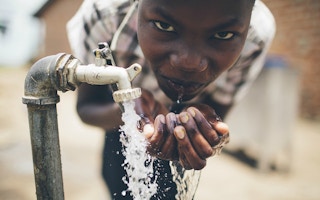While major international forums have advocated for safe drinking water, and many developing countries are striving to provide safe drinking water, the quality of drinking water in urban cities, secondary cities and in rural towns of Sindh in the Indus basin is unsafe to drink.
Figures of access to safe water in Pakistan and in Sindh are variable. According to the WaterAid’s Pakistan Country Strategy 2010-2015, around 50 per cent of the population has adequate access to drinking water and a mere 15 per cent to sanitation.
In December 2015, the federal minister for science and technology said that 82 per cent of Pakistanis consume dirty water. A recent report in Dawn said that 40 per cent of water samples collected from different parts of Karachi were not properly chlorinated.
According to World Health Organisation (WHO) and United Nations Children’s Fund (UNICEF), in 2012, only 36 per cent of Pakistan’s population had access to piped water.
This has serious implications for the health of the people in Sindh. Environmental degradation costs Pakistan PKR 365 billion (USD 3.5 billion) per year, and these costs fall disproportionately upon the poor. About a third of this cost is the result of expenditure incurred on death and diseases due to inadequate water supply, sanitation and hygiene.
According to a World Wide Fund for Nature (WWF) report titled, “Pakistan’s Waters at Risk”, 20 per cent to 40 per cent of the hospital beds in Pakistan are occupied by patients suffering from water-related diseases, such as typhoid, cholera, dysentery and hepatitis, which are responsible for one third of all deaths.
The WWF report further says: “poor water and sanitation is a major public health concern. Waterborne diseases are responsible for substantial human and economic losses. These include loss of millions of working hours of productivity annually, and associated costs for health care. Reduction in the occurrence of water borne diseases will go a long way in the efforts to alleviate poverty.”
Unfortunately, proper and authoritative data on drinking water quality for Sindh is not readily available. Whatever little data is available shows that the drinking water quality in all cities and towns of Sindh is unsafe and does not meet the WHO’s drinking water guidelines.
In 2013, the Pakistan Council of Research in Water Resources (PCRWR) collected and analysed 28 samples of water, collected from different localities of Karachi. Of them, only two were fit for consumption, and the rest 26 samples had bacterial contamination.
PCRWR conducted bacteriological tests on drinking water in Hyderabad, and found that all the 15 sources monitored in Hyderabad city were found unfit to drink mainly due to bacteriological contamination (93 per cent), excessive levels of iron (47 per cent) and turbidity (93 per cent).
A local study collected 52 domestic water samples in Karachi and analysed them for presence of bacterial contamination. The results showed that 50 out of 52 samples had bacteriological contamination. In Karachi, more than 20,000 children die annually, with the majority of deaths caused by drinking contaminated water.
Another study examined water quality in Thatta, a town about 100 km east of Karachi, in 2014. The study found elevated levels of some heavy metals. Presence of bacterial contamination and heavy metals that exceeded the WHO drinking water guidelines was also noted in Karachi and Hyderabad tap waters, in 2014, under a separate study.
Water treatment plants in various towns in Sindh draw their raw water from the Indus River, or from canals, depending on their location. The surface water bodies in Sindh are polluted, with the degree of pollution varying from one location to another.
The author is a senior environmental engineer based in Pakistan.
This story was published with permission from The Third Pole.
Read the full story.

















